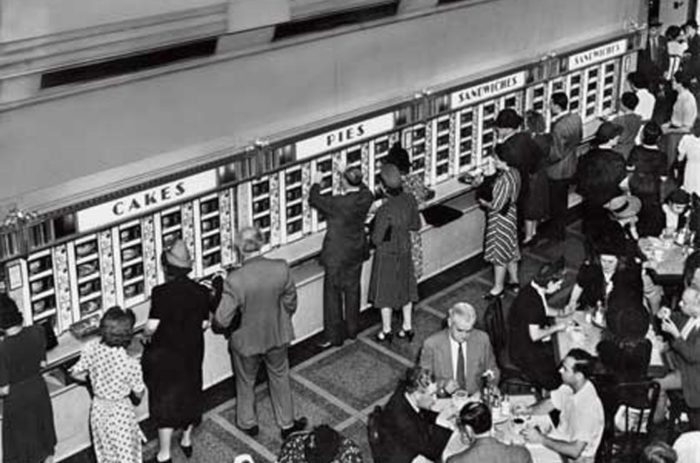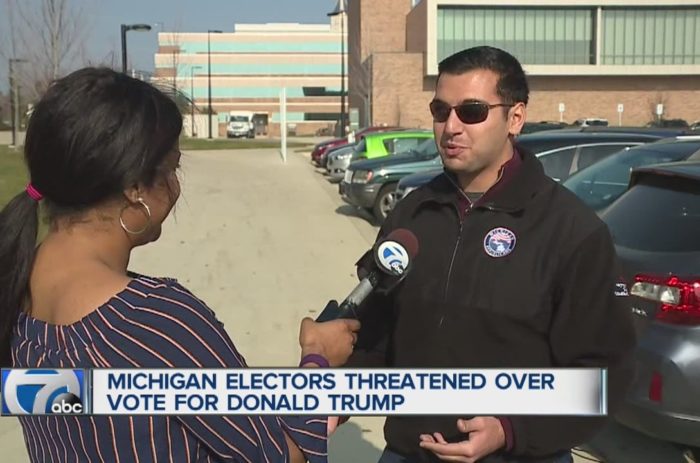The following is an excerpt from OpinionJournal.com’s “Best of the Web” written by the editor, James Taranto.
Bottom Stories of the Day
- “County Judge Strikes Down Some Restrictions on Public Unions in Wisconsin Law”–headline, New York Times, Sept. 15
- “Occupy Movement Turns 1 Year Old, Its Effect Still Hard to Define”–headline, Los Angeles Times, Sept. 15
The photo of Nakoula Basseley Nakoula being led from his Cerritos, Calif., home has become an Internet sensation, giving rise, among other things, to a popular QuickMeme and a call from Glenn Reynolds for President Obama’s resignation: “By sending–literally–brownshirted enforcers to engage in–literally–a midnight knock at the door of a man for the non-crime of embarrassing the President of the United States and his administration, President Obama violated that oath [to the Constitution]. You can try to pretty this up (It’s just about possible probation violations! Sure.), or make excuses or draw distinctions, but that’s what’s happened. It is a betrayal of his duties as President, and a disgrace.”
The assumption is that this was a pretextual arrest–one with a patina of propriety but improper motives, in this case punishing or intimidating Nakoula for engaging in constitutionally protected speech.
A Los Angeles County sheriff’s spokesman denies that it was an arrest: “He was never in handcuffs,” Steve Whitmore tells the New York Times. “He was never arrested. This is all voluntary.” But whatever it was, the Times suggests it was pretextual: “Federal officials appeared to be investigating whether Mr. Nakoula had been the person who uploaded the video to YouTube. If so, he would have violated the terms of his sentencing in a conviction in a 2010 check-kiting case, which includes restrictions against his using the Internet without permission from a probation officer.”
On the other hand, we can think of reasons the government might want to talk to Nakoula aside from punishing or chilling speech–namely, to understand the story behind the video that has been the pretext of anti-American rioting. Was it an innocent exercise in freedom of expression, or a false-flag operation? That is, were the producers in cahoots with the extremists who egged on the violence? We have no reason to think the answer is yes, but it would behoove the federal government to check out the possibility.
 The “optics,” as the politicos say, were terrible. It certainly doesn’t look voluntary in the photos. But that could have been the fault of the “news media encampment” that, according to the Times, had “kept 24-hour watch outside his front door.” The large police presence–we count at least five officers in the QuickMeme photo–might well have been for protective rather than coercive purposes.
The “optics,” as the politicos say, were terrible. It certainly doesn’t look voluntary in the photos. But that could have been the fault of the “news media encampment” that, according to the Times, had “kept 24-hour watch outside his front door.” The large police presence–we count at least five officers in the QuickMeme photo–might well have been for protective rather than coercive purposes.
Nakoula’s face is covered in what the Times describes as a shawl. It seems a metaphor for the suppression of individual freedom by the American state. In truth, it was probably a sensible precaution. If you were in Nakoula’s position, you wouldn’t want murderous Islamist thugs to know what you look like either.
Yet even if law enforcement’s treatment of Nakoula was entirely above board, critics of the administration have good reason for suspicion that it is hostile to civil liberties. On Friday, Politico reports, the White House asked Google, which owns YouTube, “to review the video to see if it was in compliance with their terms of use,” in press secretary Jay Carney’s words. Having already done so and finding it compliant, Google rejected the implicit censorship request.
Blogger Eugene Volokh, a First Amendment scholar, wisely counsels against the temptation to attempt to buy calm by yielding to censorship just this one time: “It seems to me to actually be safer–not just better for First Amendment principles, but actually safer for Americans – to hold the line now, and make clear that American speech is protected even if foreigners choose to respond to it with murder. That would send the message, ‘murder won’t get you what you want.’ Not a perfectly effective message to be sure, but a better one than ‘murder will get you what you want.’ “
The message of the administration’s ineffectual effort at censorship, however, is something like this: “We can’t guarantee that murder will get you what you want, but we promise we’ll do our best.” That’s arguably more provocative even than simple capitulation.
In its public statements, the Obama administration has put no daylight between itself and the embassy rioters in insisting that this is all about the video. Susan Rice, the ambassador to the U.N., went so far as to tell ABC’s Jake Tapper yesterday that even the murder of four Americans in Libya, including the ambassador, was the result of a “challenge” to the video having been “hijacked, let us say, by some individual clusters of extremists who came with heavier weapons.”
As The Wall Street Journal notes in an editorial: “That doesn’t square with the view of Libyan officials, who say they believe the attack was the work of Islamists linked to al Qaeda. Peaceful protesters don’t typically carry rocket-propelled grenades and other heavy weapons to a demonstration. The fact that the attack happened on the anniversary of September 11 also suggests terrorist planning.”
If you think of the Obama administration as an extension of the Obama campaign, it’s easy to understand its insensitivity to civil liberties and its eagerness to embrace the pretext that the embassy riots were about the video. From the standpoint of Obama’s re-election, it is imperative that voters be as distracted as possible from Obama’s failures. The murders in Libya and riots across the Middle East underscore failures both tactical (insufficient protection of diplomatic missions and personnel) and strategic.
Obama’s strategic failure consists in having believed his own–well, we [don’t know how to describe it]. Here he is in 2008:
I would come to meetings with world leaders with them understanding that I was opposed to this war in Iraq from the start, that I have consistently described a U.S. foreign policy that puts diplomacy at the forefront. . . .
I think the world would see me as a different kind of president, somebody who could see the world through their eyes. . . . If I convene a meeting with Muslim leaders around the world to discuss how they can align themselves in our battle against terrorism, but also put our–the relationship between the West and the Islamic world on a more productive footing, I do so with the credibility of somebody who actually lived in a Muslim country for a number of years.”
With the benefit of anonymity, the Times reports, “senior administration officials” are telling a different story:
They had concluded that the sometimes violent protests in Muslim countries may presage a period of sustained instability with unpredictable diplomatic and political consequences. While pressing Arab leaders to tamp down the unrest, Mr. Obama’s advisers say they may have to consider whether to scale back diplomatic activities in the region.
Other than a Nobel Peace Prize, what exactly does Obama have to show for being a “different kind of president”?
For more “Best of the Web” click here and look for the “Best of the Web Today” link in the middle column below “Today’s Columnists.”



